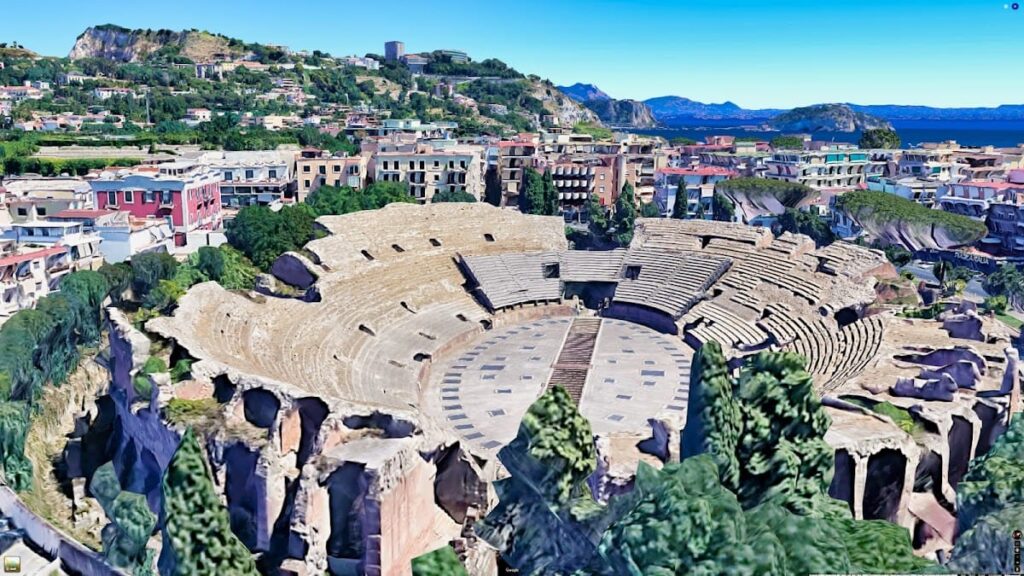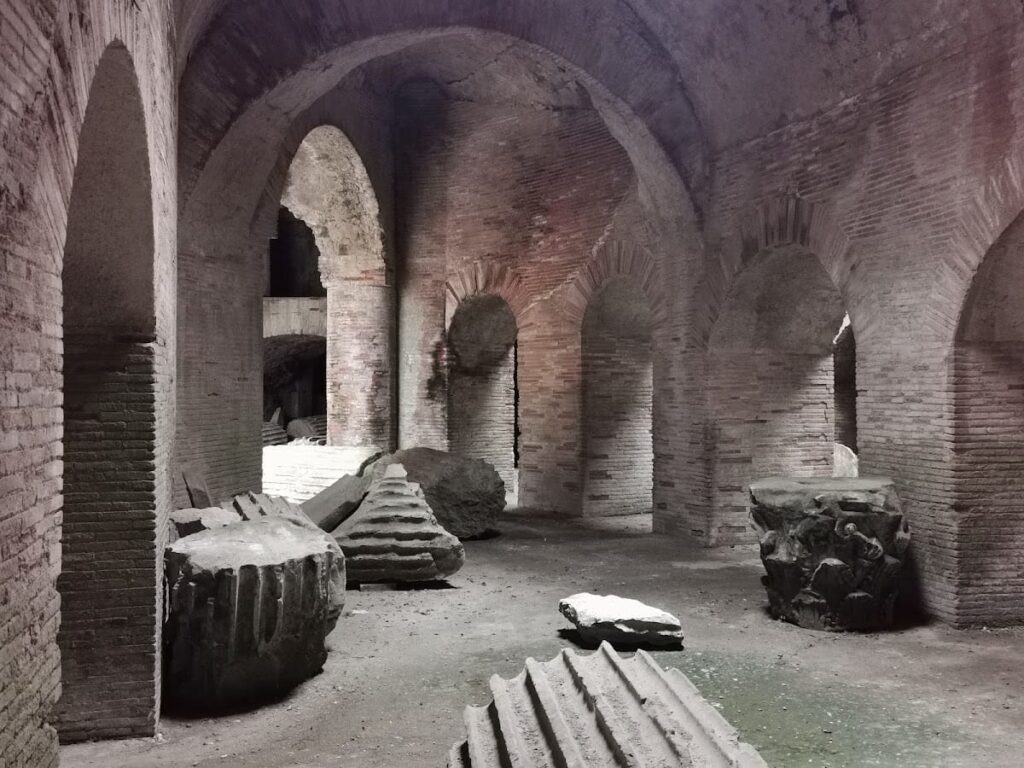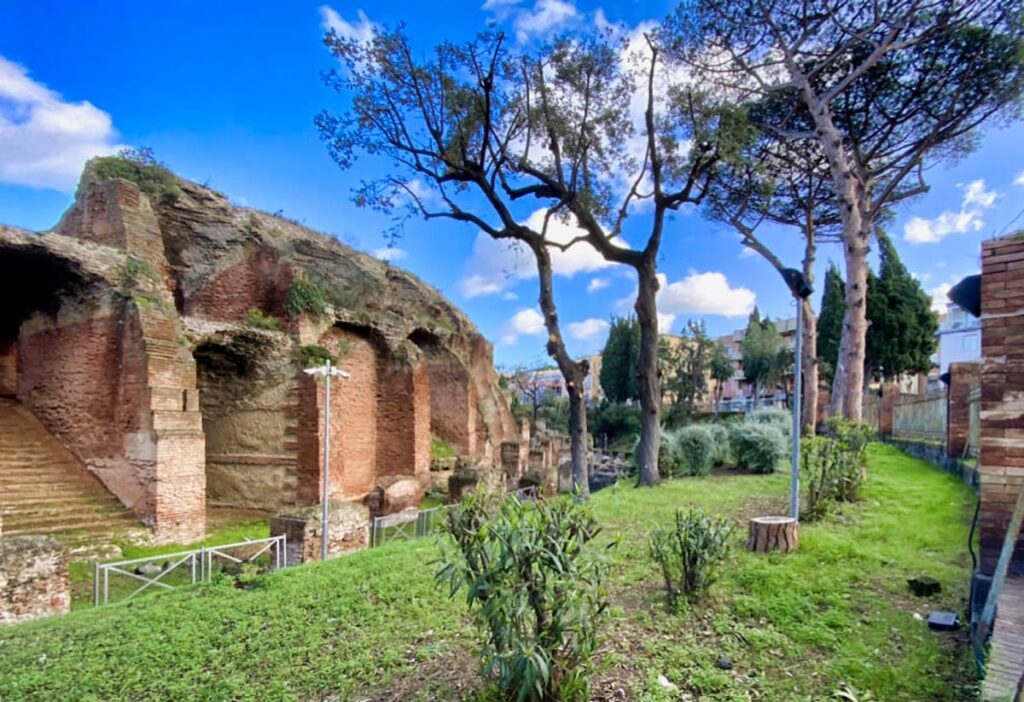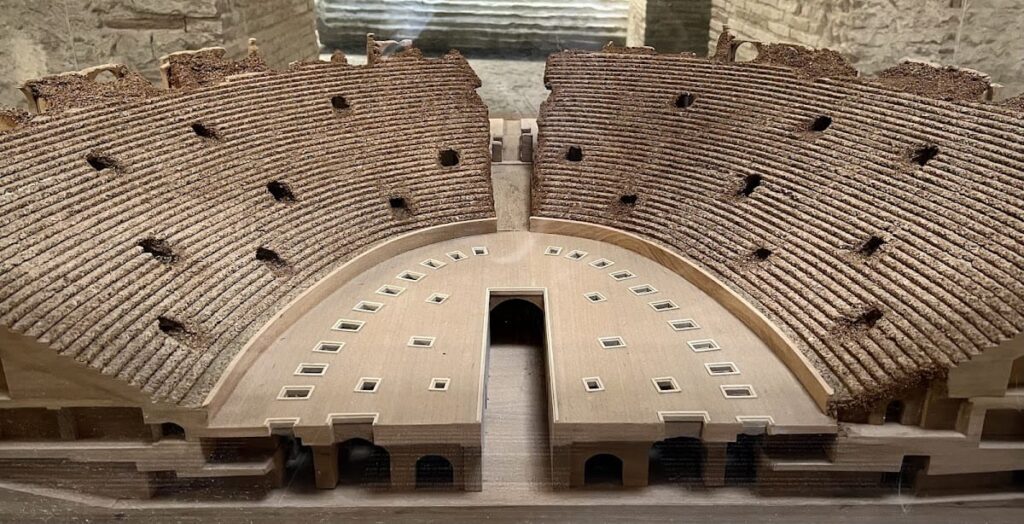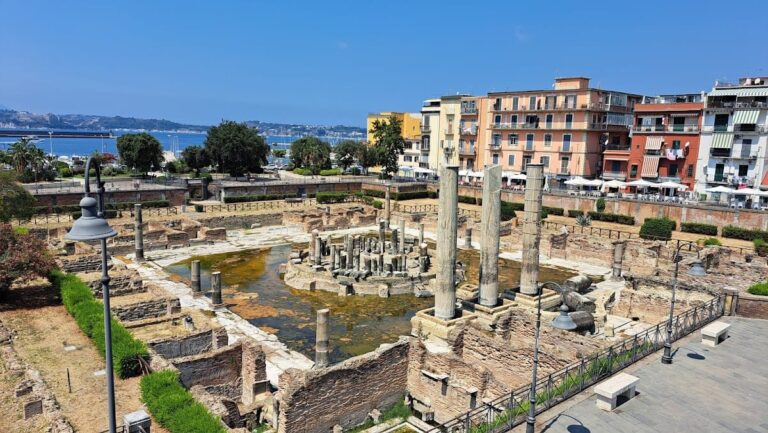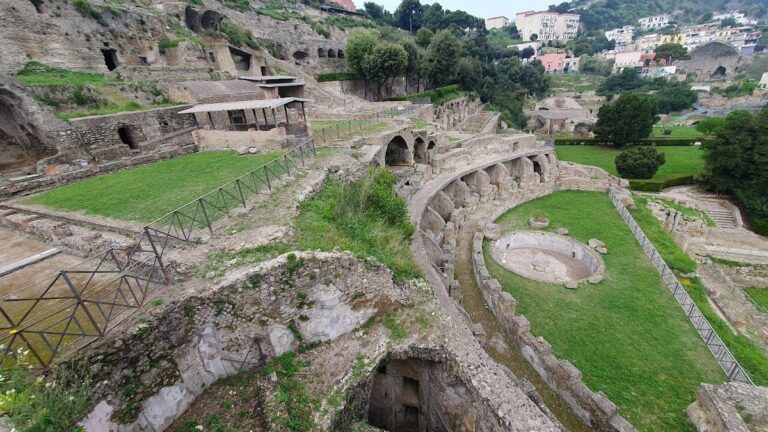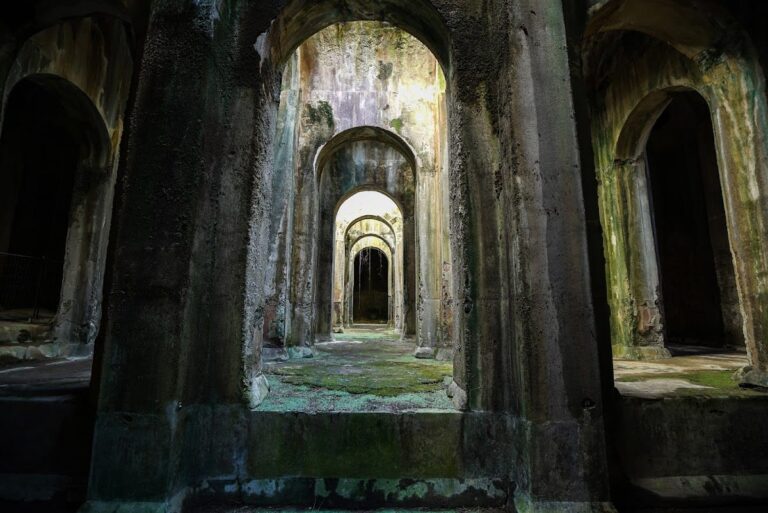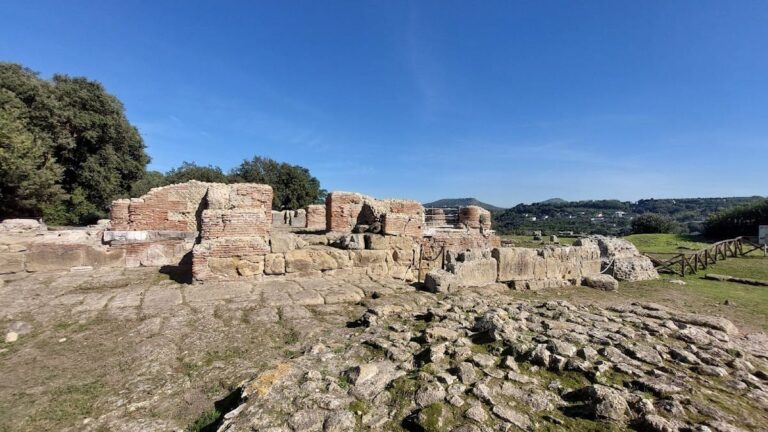Flavian Amphitheater in Pozzuoli: A Roman Entertainment Venue
Visitor Information
Google Rating: 4.5
Popularity: Medium
Google Maps: View on Google Maps
Official Website: pafleg.cultura.gov.it
Country: Italy
Civilization: Roman
Remains: Entertainment
History
The Flavian Amphitheater is located in Pozzuoli, a city in the Metropolitan City of Naples, southern Italy. It was built by the Romans during the 1st century AD to serve the growing population of Puteoli, the ancient name of Pozzuoli. This city was an important commercial and port center in Roman times.
Construction of the amphitheater likely began under Emperor Vespasian, founder of the Flavian dynasty, and was completed and inaugurated during the reign of his son Titus. Some architectural evidence, such as the use of opus reticulatum masonry, suggests that an earlier structure may have existed on the site, possibly dating back to Emperor Nero’s time. However, any such earlier building was later removed, likely due to Nero’s condemnation after his death.
The amphitheater replaced a smaller Republican-era arena nearby, which had become inadequate for the city’s entertainment needs. It was designed to hold between 35,000 and 50,000 spectators, making it the third largest amphitheater in Italy after the Colosseum in Rome and the Amphitheater of Capua.
In 305 AD, during the persecutions ordered by Emperor Diocletian, the amphitheater was the site where Christian martyrs, including Saint Gennaro (San Gennaro) and Saint Procolo, were sentenced to death by wild animals. Tradition recounts a miracle in which the beasts refused to harm the saints. Despite this, both were later executed by beheading near the nearby Solfatara volcanic area. In the 17th and 18th centuries, a chapel dedicated to San Gennaro was established within the amphitheater, marking the cell where the martyrs were held. This chapel features commemorative plaques, a maiolica altar, and ceramic statues of the saints.
Archaeological interest in the amphitheater began in 1839, with excavations continuing sporadically through the 19th century. The site was fully cleared of debris in 1947, revealing much of its original structure and underground features.
Remains
The Flavian Amphitheater has an elliptical shape, measuring approximately 150 by 116 meters on the outside. The arena itself is about 74 by 44 meters. Its design includes three levels of arches on the exterior, supported by pillars and topped by an attic story. The original façade rested on a travertine platform and featured piperno stone pillars decorated with semi-columns, later reinforced with large brick pillars.
Access to the amphitheater was through sixteen entrances, including four main gates aligned with the principal axes. Inside, twenty stair ramps led spectators to the upper seating areas. The seating, or cavea, was divided into three sections known as ima, media, and summa, accommodating up to 50,000 people.
The arena perimeter contained several trapdoors and a central median axis called the “fossa scenica.” This feature allowed cages holding wild animals such as lions, tigers, and giraffes to be raised into the arena during shows. These trapdoors were covered with wooden planks when not in use.
Beneath the arena lies a well-preserved underground level about seven meters deep. This subterranean area housed mechanical devices used to lift cages and possibly stage scenery. Archaeological evidence suggests this underground section was added during the reigns of Emperors Trajan or Hadrian.
The interior of the amphitheater is organized into four sectors, divided by two crossing passageways and a large elliptical corridor running along the arena wall. These spaces served various functions related to gladiatorial contests and animal hunts, known as venationes.
The amphitheater’s location is strategic, situated at the junction of two important Roman roads: the Via Domiziana and the road leading to Naples.
Nearby stood an older Republican amphitheater, smaller in size at approximately 130 by 95 meters. This earlier structure was mostly destroyed during early 20th-century railway construction, with only some arches and galleries remaining today.
